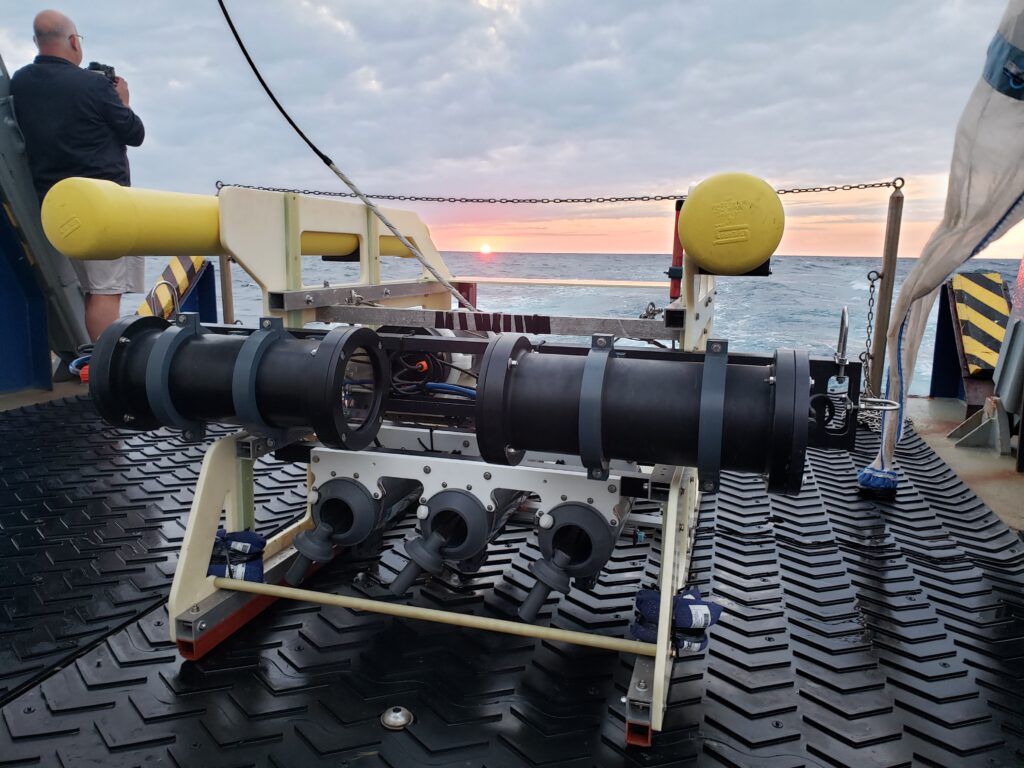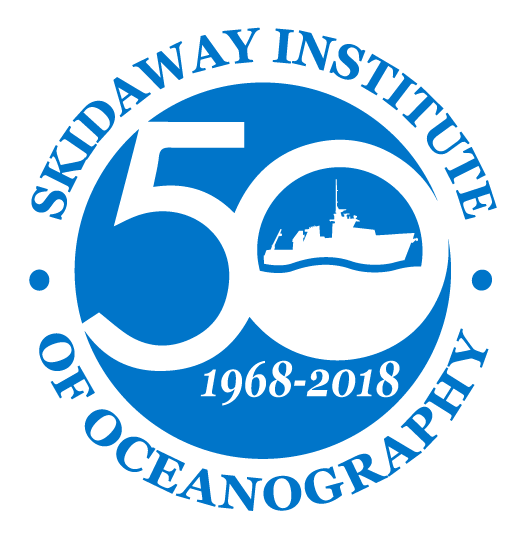The DolLAYER team was at sea from October 27 – November 10 to measure changes in the northern Gulf of Mexico shelf food webs during the vertically mixed time of the year (after summer stratification had broken down). During fall, the waters are still relatively warm, but various weather systems pass through (and sometimes hurricanes), causing the water column to become vertically mixed. That means that temperature, salinity, and dissolved oxygen are fairly uniform throughout the water column (in contrast to the ocean “layer cake” and low oxygen bottom waters that we saw during August). We measured the abundances of different zooplankton with imaging and coupled that with stable isotopes and molecular gut content analysis to see the connection between the oceanography, distributions of organisms, and their diets. This will allow us to test the hypothesis that the amount of stratification influences the abundance and distribution of gelatinous zooplankton and their ecological impacts on the rest of the food web.

Compared to the calm seas (and brutally hot weather) we had during the August cruise, this one in October-November was a mixed bag. There were some warm days, cold days, and very windy days with ~8 ft seas that made it unsafe for us to work, so we had to seek shelter in Pensacola, FL for a day or two. We were expecting to have some rough weather days during this time of the year, but overall, we were pretty fortunate with the weather and were able to complete the scientific mission. The team of scientists was smaller (9 scientists) because more people had work/school conflicts during the middle of the semester. However, our experienced crew worked like a well-oiled machine, with everyone understanding their assignments and complementing one another’s efforts. With this cruise finished, we now have data from the South Atlantic Bight (stratified and mixed-up) and the northern Gulf of Mexico (stratified and mixed-up) for a thorough seasonal and inter-ecosystem comparison. Everyone is excited to start digging through the data! Below is a map of where we went in the Gulf (blue dots are the sampling station). The gray lines on the map are the isobaths (lines of constant depth) of 20, 30, 40, and 50 meters.

Each of our stations had a specific routine. Below is a picture of co-Chief Scientist Dr. Marc Frischer writing up the game plan on the whiteboard in the “dry lab” part of the RV Savannah. I imagine this is something like what Kirby Smart does before the UGA football games, except we’re on a ship in the middle of the ocean, and the goal is sampling consistency rather than annihilating an opponent.
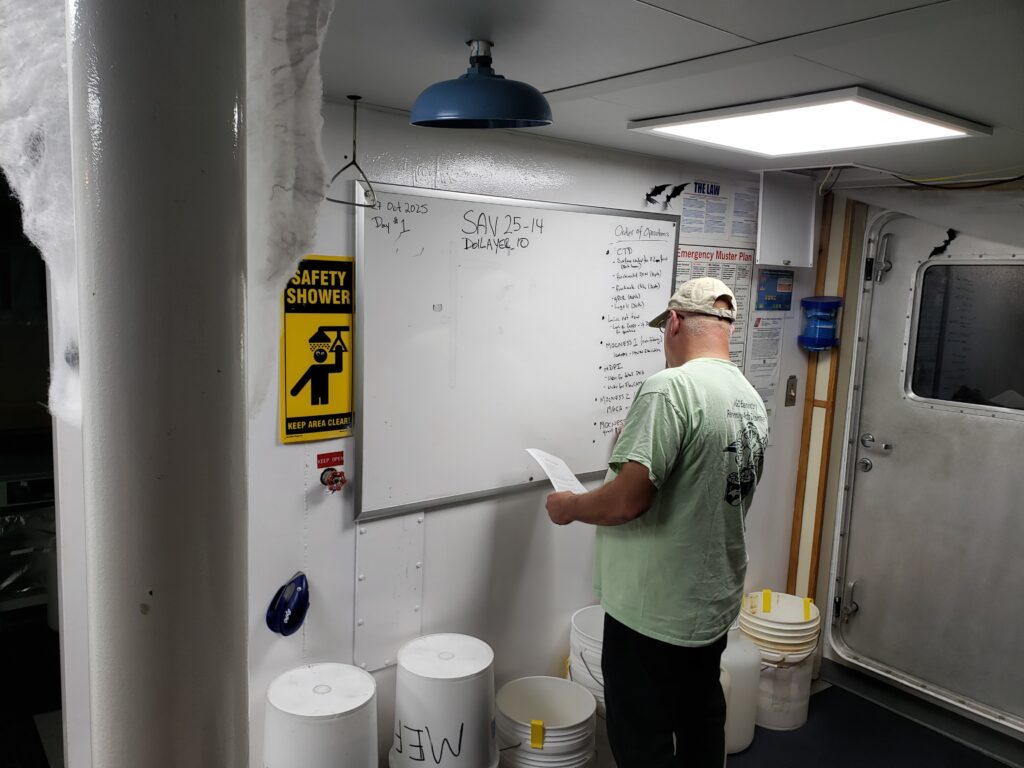
The steps at each station are roughly as follows: 1) Deploy the CTD rosette to get an idea of the water column properties and sample water inside and above the chlorophyll-a maximum with those gray bottles (chlorophyll as measured by the CTD rosette is a proxy for phytoplankton abundance). Below is a picture of Dr. Frischer and marine technician Olly recovering the CTD. Whoever is on deck during recovery pulls the CTD away from the edge of the ship to make room for the next instrument – the MOCNESS (Multiple Opening and Closing Net Environmental Sensing System)
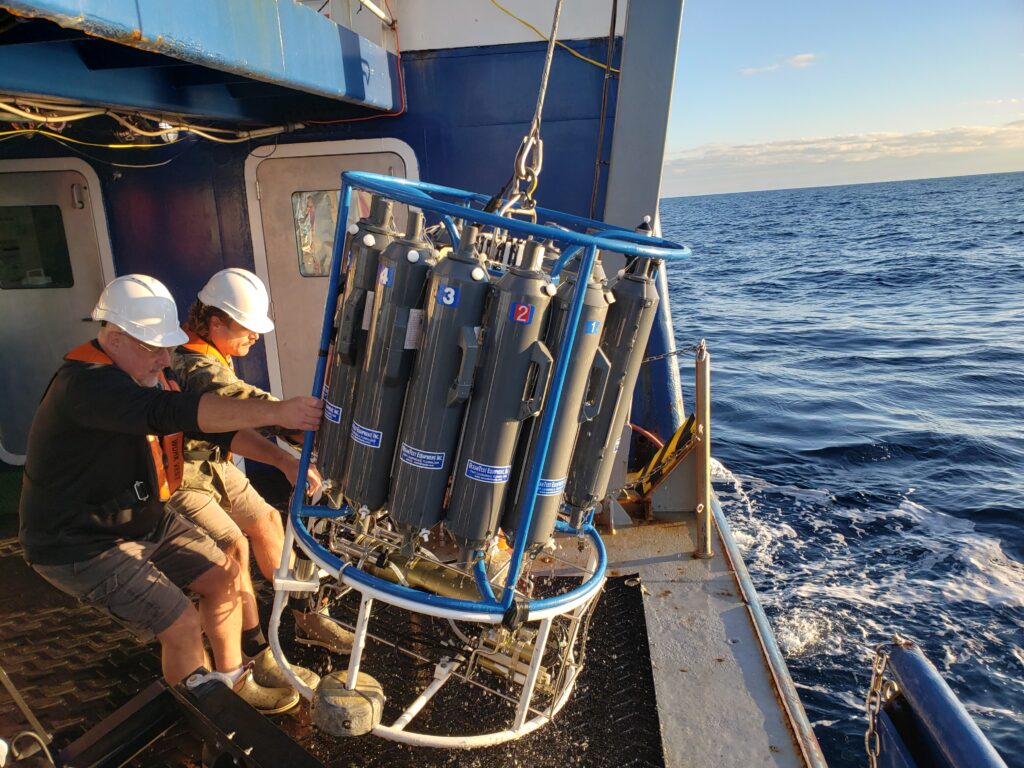
The water from the CTD goes through a bunch of processing to measure the amount of particulate organic carbon (POC), chlorophyll, and nutrients (among other things). Below is a picture of PhD student Gabi showing off the shipboard contraption for filtering the water for POC.
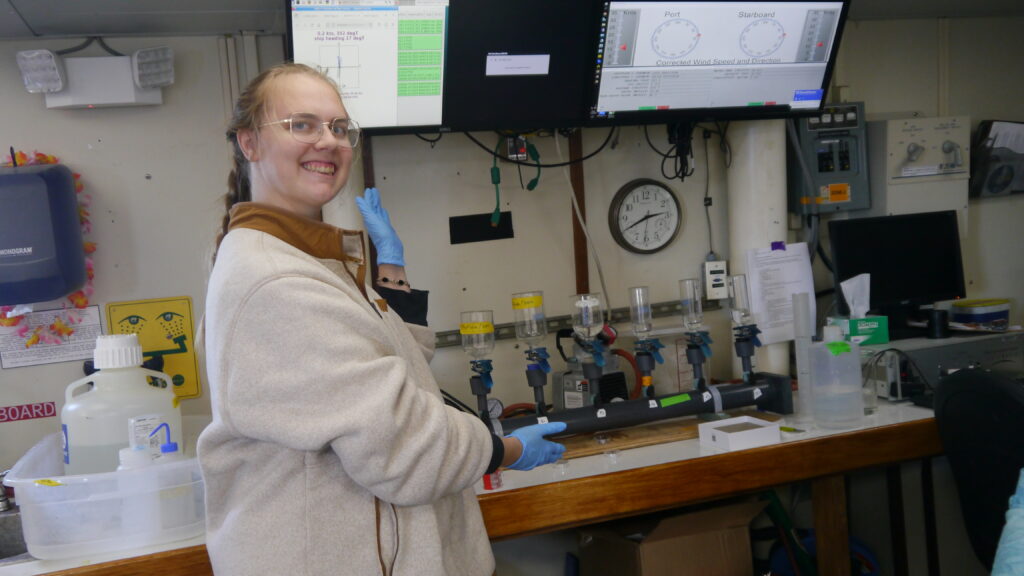
2) Deploy the MOCNESS to capture zooplankton in different parts of the water column. We use these samples to look at their stable isotopes, which indicates the trophic level at which they feed (e.g., grazing on phytoplankton or eating other animals). Below is a picture of 2nd mate Sean and PhD student Nele deploying the MOCNESS. Each one of those white nets will bring up zooplankton from a known depth range.
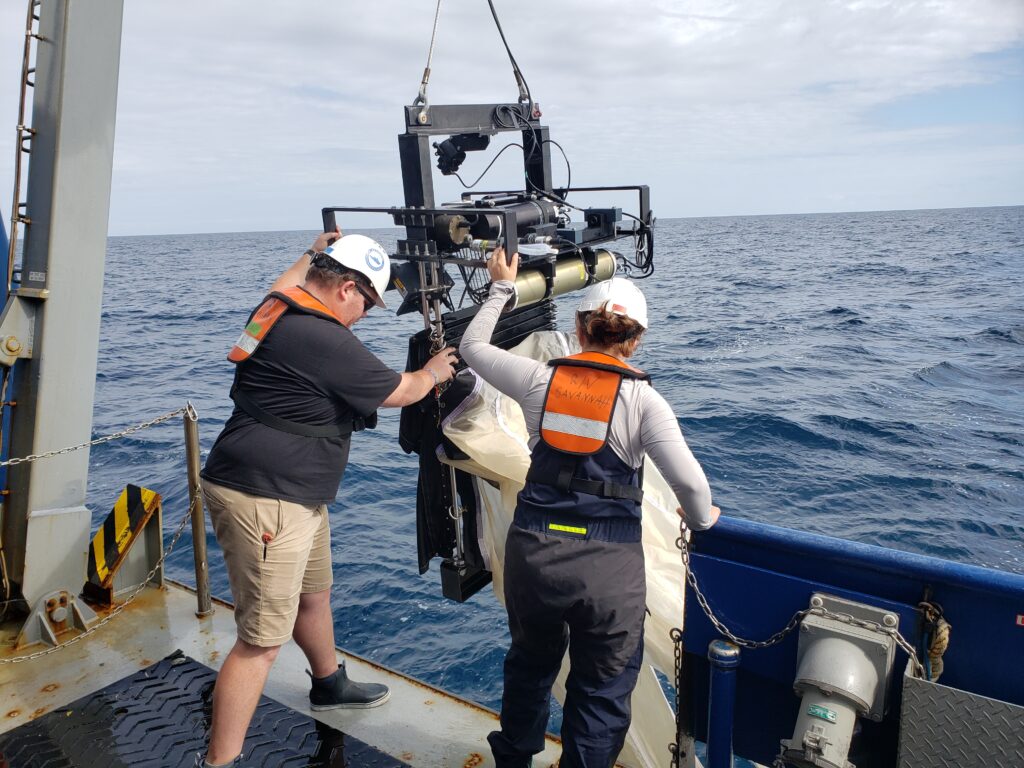
We control the exact location of each net sampling with a shipboard computer. It’s a bit of a dance between us scientists operating the MOCNESS and the captain, who is simultaneously driving the ship and controlling the cable payout rate on the winch. We are in constant communication on walkie-talkies with the captain during the tow. Below is a picture of the MOCNESS computer screen after a very good deployment. The black line indicates where the MOCNESS went, and the dotted horizontal lines on the graph are where we closed (and opened) each net. This tow is good because the MOCNESS made a near-perfect V-shape (pressure in decibars on the y axis is approximately the same as meters). The MOCNESS went to depth and came up smoothly, so the nets got a representative sample in each of the depth intervals.
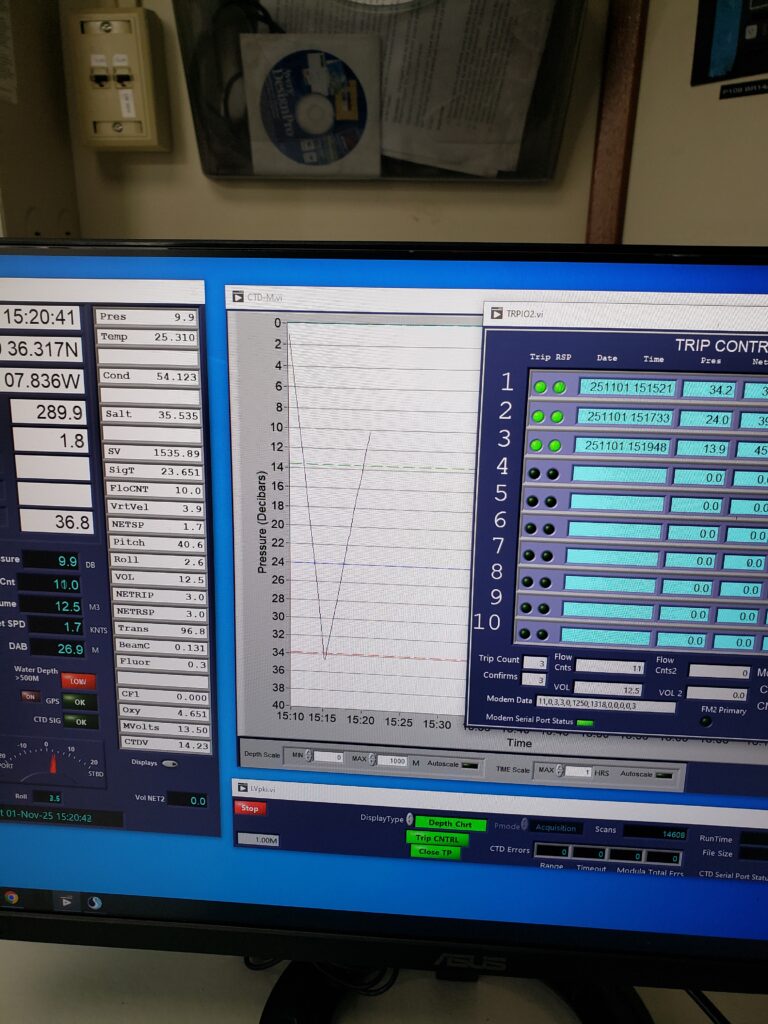
The scientists in the dark room known as the “wet lab” pick out different zooplankton from the various nets. Each scientist has a different assigned net (shallow, middle, or deep). Here is a picture of PhD student Alyssa and Master’s student Sarah in the picking room on Halloween. Do not worry – they did not wear Halloween costumes during the actual process of picking these organisms that are often very difficult to see! Not pictured is Master’s student Michael who was the top-ranked picker of the shallow net that was always processed on the other table in the wet lab.
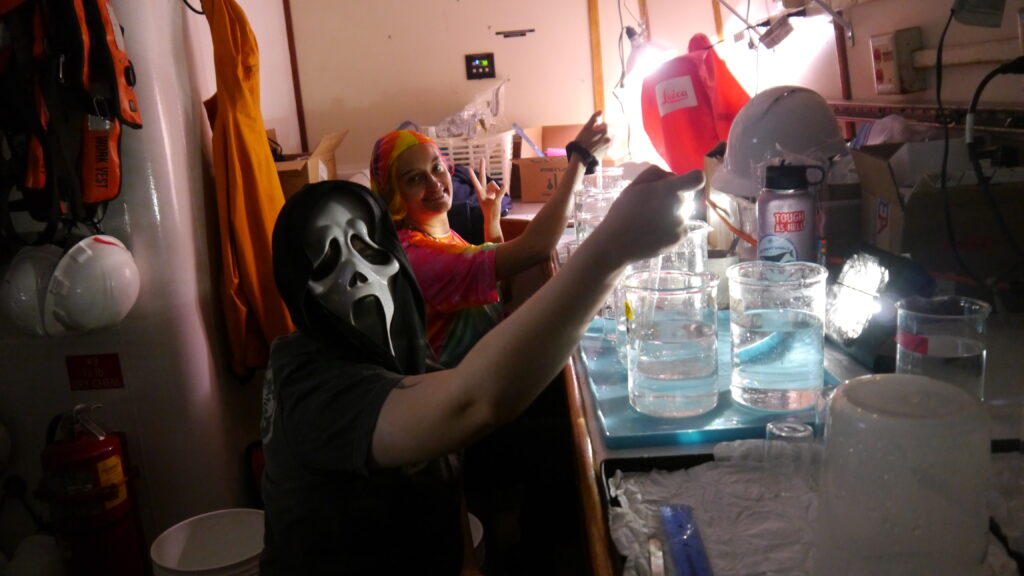
3) Deploy the modular Deep-focus Plankton Imager (mDPI) to get a high resolution “snapshot” of the distribution of all of the organisms (and marine snow particles). Below is a picture that Dr. Frischer took of us recovering the mDPI after a successful deployment. Below that are a few examples of zooplankton we imaged during the cruise.
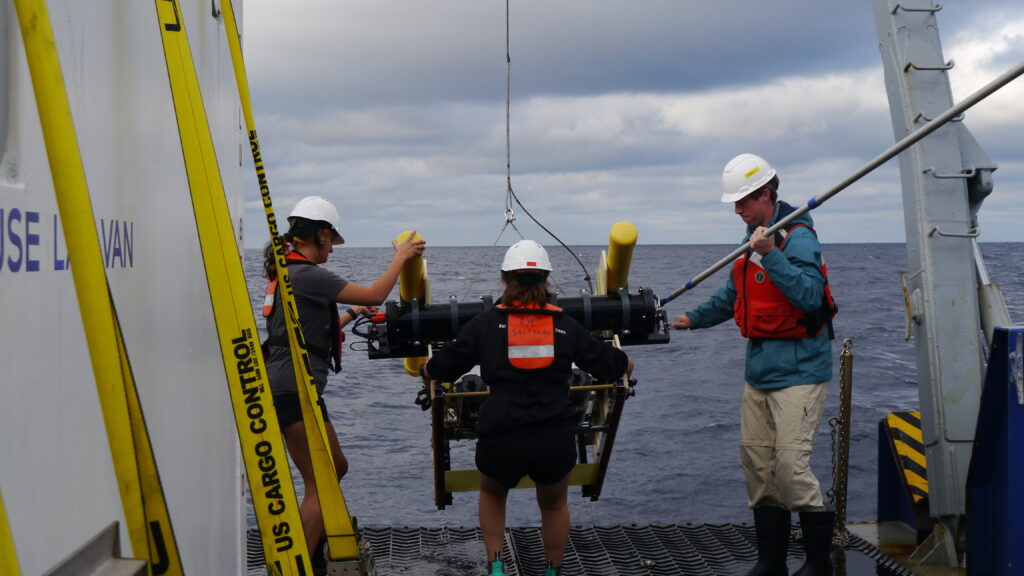
A doliolid – the nurse life stage. The wider bulb-like part of the animal has no organs, but it pulses and kind of serves like a motor to move the colony around. The buds on the tail-like appendage (called the “cadophore”) are either feeding on phytoplankton/organic material, or they detach from the cadophore and become the next life stage.
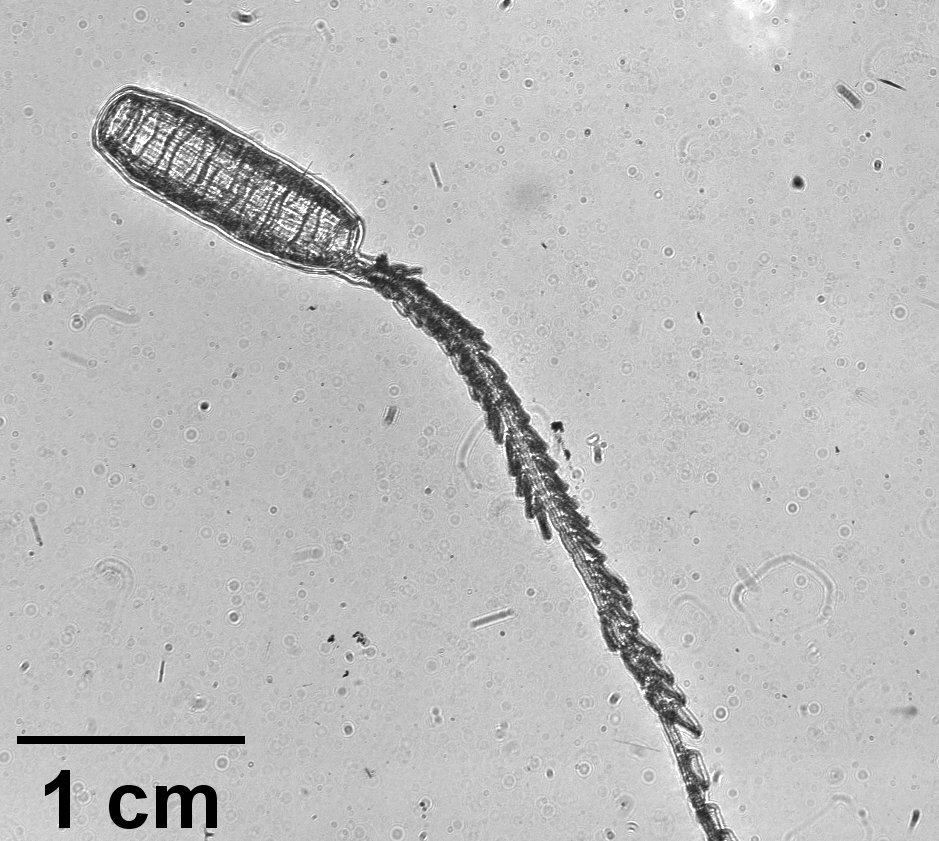
A larval fish – possibly a goby.
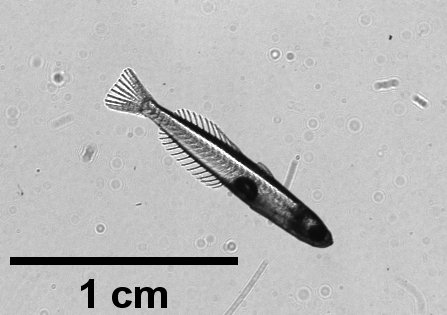
And a large siphonophore from the genus Diphyes. This image also includes a chaetognath on the right side and a colony of Trichdesmium (pronounced “trick-oh-dez-mee-um”) on the bottom left (the black object that looks like a bundle of straw). Trichodesmium is cool because these bacteria can actually take nitrogen gas (~79% of the air we breathe) and convert it into ammonia, which is useful for these colonies and other organisms for building proteins.

And here are PhD students Alyssa and Nele right before an mDPI deployment. They did a great job out there making sure we did not destroy our equipment – despite some less-than-ideal conditions due to the weather.
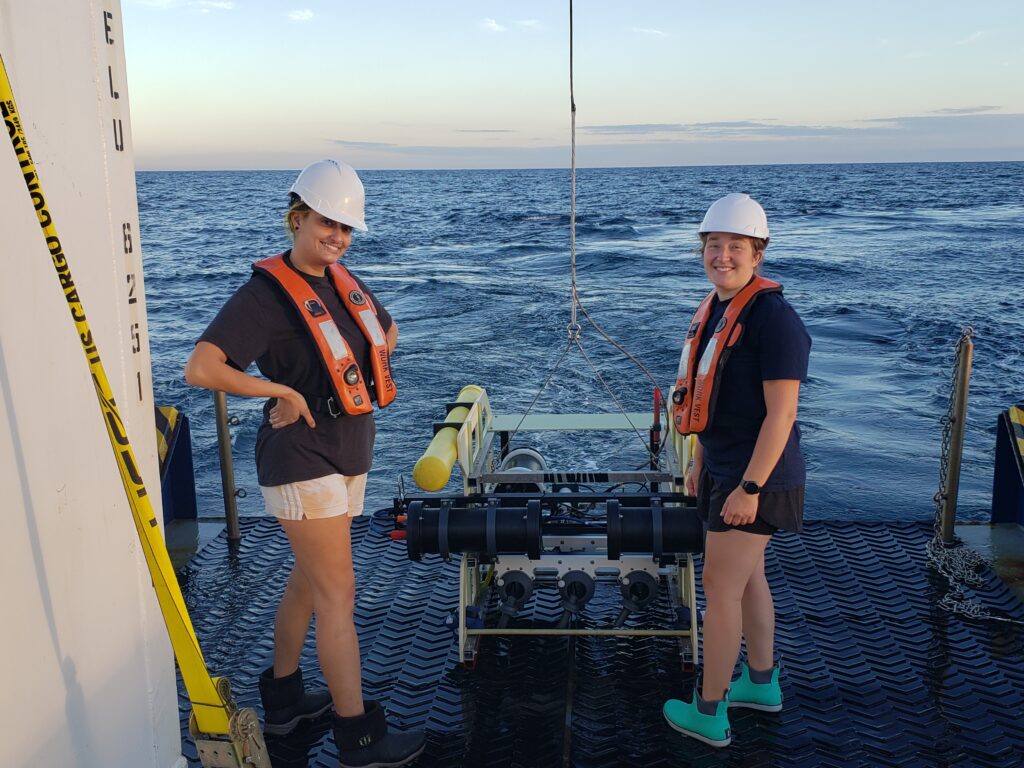
The mDPI also has 3 bottles that we close at specific depths to capture different levels of chlorophyll in the water column. You can see them lined up in a row on the underside of the mDPI pictured above. The water from those bottles is run through an instrument called the FlowCam, which gets pictures of phytoplankton and other microbes that are too small for us to image directly with the mDPI. The organisms imaged by the FlowCam are less than 200 microns, which would be about 16 pixels in one of the mDPI images shown above! There would be no way for us to tell what these smaller particles are without the FlowCam. Below is a picture of PhD student Emily running the FlowCam. The left side of the screen in front or her are the little images (or vignettes) of the various microbes in the water sample.

To finish each station (step 4), we deploy the MOCNESS two more times for other analyses and to get a sample to preserve in ethanol. We use sieves to process the sample from each net and get them ready for jars of ethanol. This is what the zooplankton look like from the end of a MOCNESS tow. It kind of looks like a brown goo, but there are so many interesting life forms in there (as you can see from the mDPI images above). Sometimes the sample will flicker an iridescent blue color because of bioluminescence!
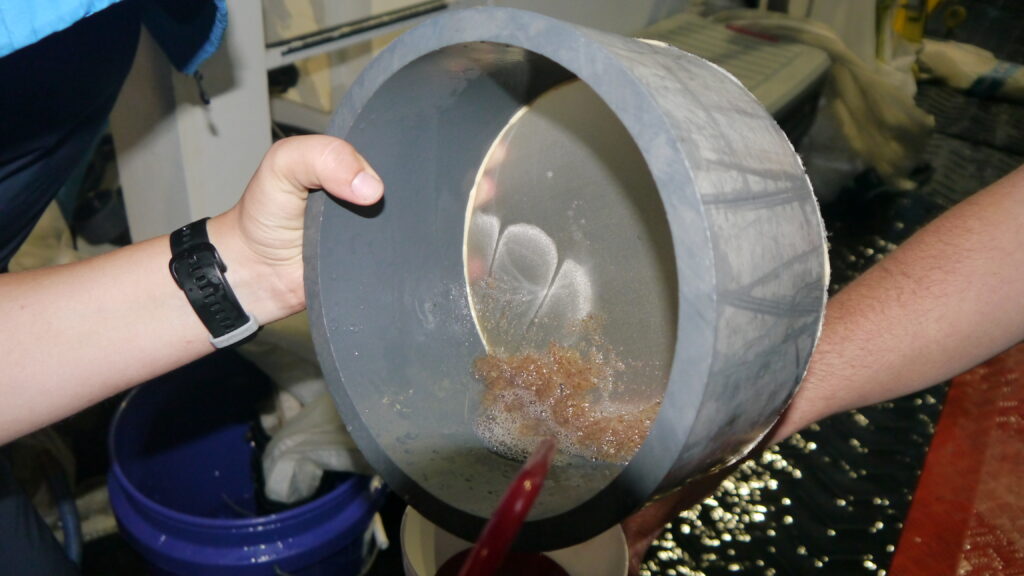
And finally, a picture of the sunset behind the mDPI. I like this one because people are getting sunset pictures within my sunset picture. The crew on the RV Savannah assured me that a huge number of the photos on their phones are of sunsets and sunrises at sea. It must never get old to see such beauty in nature!
